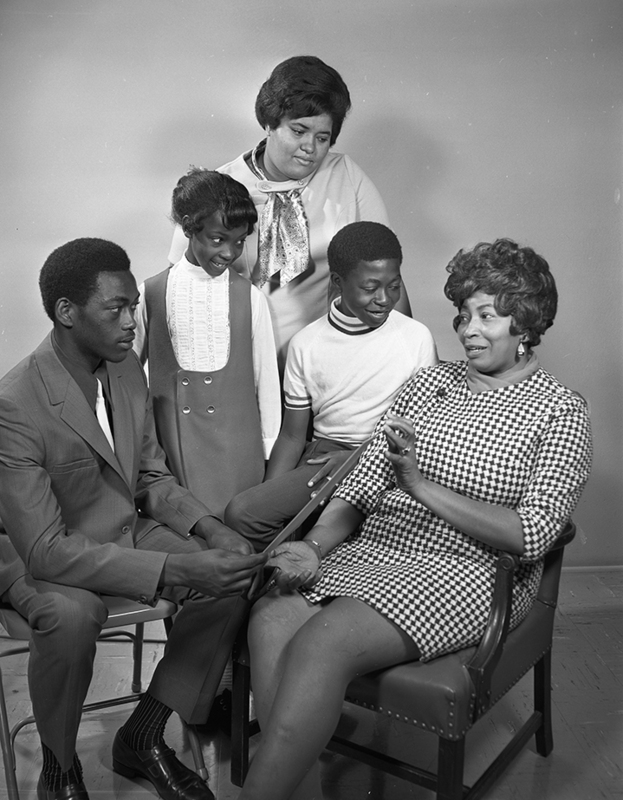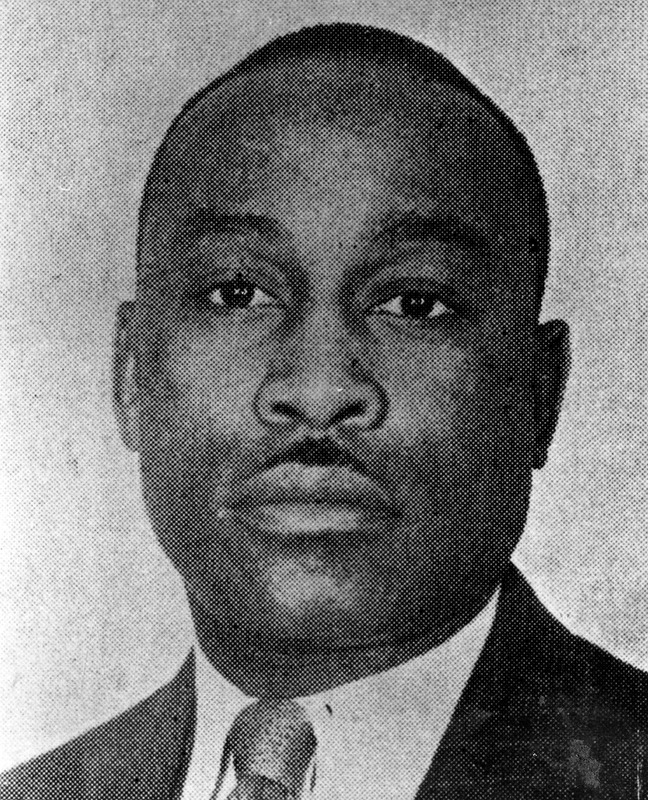Marshall White, 1963
Marshall N. White was born in 1909 in Humboldt, Tennessee. He moved to Chicago with his mother when he was 15 years old. She worked in a local hospital as an aid, and he worked in the laundry. Due to his time working in the hospital, White made plans to study medicine and in 1939 he graduated from the Chicago Northwestern Institute of Surgical Podiatry.
White joined the military soon after graduation and served for five years, initially working in a hospital and police unit. In 1943 he was transferred to Kearns, Utah, working at the military station hospital. His supervisor saw that White had a talent for communicating with others and had him work in the Care Unit of the hospital where he helped soldiers adjust to civilian life.
In 1944 White became a health department officer and transferred to Ogden to help in the venereal disease clinic. As part of his responsibilities, he interviewed prostitutes, drug dealers, addicts, transients, civilians, and military personnel. He was known for his discretion and willingness to help anyone find medical treatment. He soon became known as “Doc” because of the white smock he frequently wore.
Wanting to become a police officer, White applied to work for the Salt Lake Police Department, but they refused to hire him. After working for the health department for about a year, he was deputized by the Ogden Police Department as a special officer. He and Walter S. Epps of the Weber County Sheriff’s Office, patrolled mostly through Ogden’s minority neighborhoods. In May 1949, after passing the city civil service examinations, he was officially made a police officer in the Ogden Police Department.
At first, working for OPD, he was not allowed to arrest white people or drive a patrol car. He could only ride in a car if another office rode with him, and most of the officers refused to do so. Eventually other officers and officials came to respect him. He was known as a sharpshooter and represented the OPD multiple times in the Utah Peace Officers’ Association pistol competition. In 1961 he was promoted to sergeant.
White was also president of the Ogden NAACP. He often spoke to members of the community about discrimination in Ogden and advocated for just treatment of Blacks in employment and housing.
On October 16, 1963, he was trying to apprehend Michael Jones (16 years old) who had escaped from the Utah State Industrial School. Jones shot White with a “.32 special carbine that entered the officer’s right, front side just below the ribs and came out his back.” Doc was pulled back from the hallway by Lt. Anderson, and Jones eventually gave himself up. White died three days later from his injuries. He left behind his wife, Jesse Glodene, three sons and four daughters.
White had advocated for improved recreation facilities, especially on the west side of Ogden, as early as 1955. He had argued that recreation should be planned for all people in all areas. The Marshall White Center was built in his honor and was dedicated on the fifth anniversary of his death. He posthumously received the medal of valor, and his name was placed in the National Police Hall of Fame at North Port Charlotte, Florida, in honor of his sacrifice.

